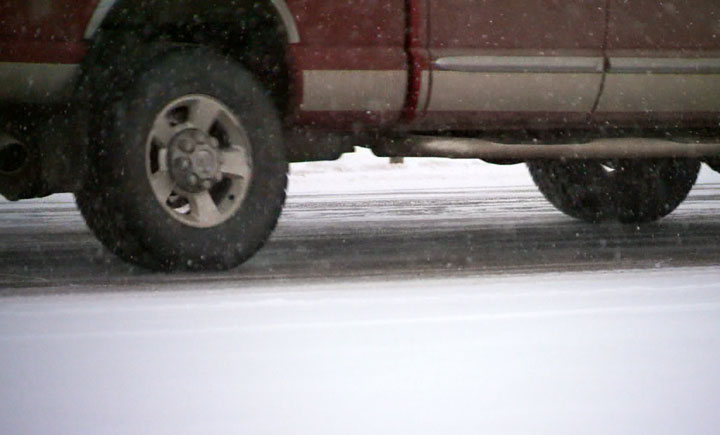Saskatchewan winters tend to sneak up quickly. It’s possible that you could be operating your vehicle for at least five months of the year in winter driving conditions.

According to SGI, the period from November to March is when most collisions occur. The main cause is failing to adjust to existing conditions.
It takes time to change from your summer driving techniques. Here’s a short reminder to heighten your winter driving skills and make sure everyone makes it to their destination safely.
READ MORE: Special weather statement for Saskatoon: ‘Winter is coming’
Traction varies tremendously with temperature changes. Icy roads will look just the same at -2C or -22C, but will be far more slippery at the warmer temperature.
During the first few snowfalls, drive very slowly and keep a five-second following distance between the vehicles ahead of you. This allows for room to brake or maneuver the vehicle safely should a situation arise.
Travelling around in the province during icy road conditions means gentle acceleration, gentle braking and small, smooth steering movements on icy roads to avoid skidding and losing control of the vehicle.
Apply gentle consistent pressure when braking instead of slamming them, as they will lock causing you to slide. Always look where you want to go and steer that way.
Brake normally if the vehicle has an anti-lock braking system (ABS). Additionally, SGI advises motorists not to use cruise control on icy or slippery roads.
- Trudeau tight-lipped on potential U.S. TikTok ban as key bill passes
- Canadian man dies during Texas Ironman event. His widow wants answers as to why
- Hundreds mourn 16-year-old Halifax homicide victim: ‘The youth are feeling it’
- On the ‘frontline’: Toronto-area residents hiring security firms to fight auto theft
Drifting snow, whiteouts and frosted windows may severely limit visibility for you and other drivers. The easiest way to fight this is to remove all snow and frost from the windows, headlights and taillights.
If the vehicle gets stuck in deep snow, try rocking it back and forth by gently accelerating until the wheels spin and then reversing in the opposite direction until enough momentum is gained to keep moving.
In addition to demonstrating safe driving skills, having a well-stocked roadside emergency kit could save your life. Supplies to think about getting include: a shovel, blankets, matches, a candle and a tin cup, food, a snow brush, ice scraper, booster cables, chain or tow rope, flashlight and flares.
CAA Saskatchewan also encourages motorists to prepare vehicles for sinking temperatures. These inspections should check the engine, block heater, brakes, fluid levels, the battery, lights and tires.
No matter what season it is: wear your seatbelts, refraining from distracted driving habits and never drink and drive.
Before heading out, check weather and highway conditions. For weather on the go download the Global News SkyTracker weather app for iPhone, iPad or Android.


Comments